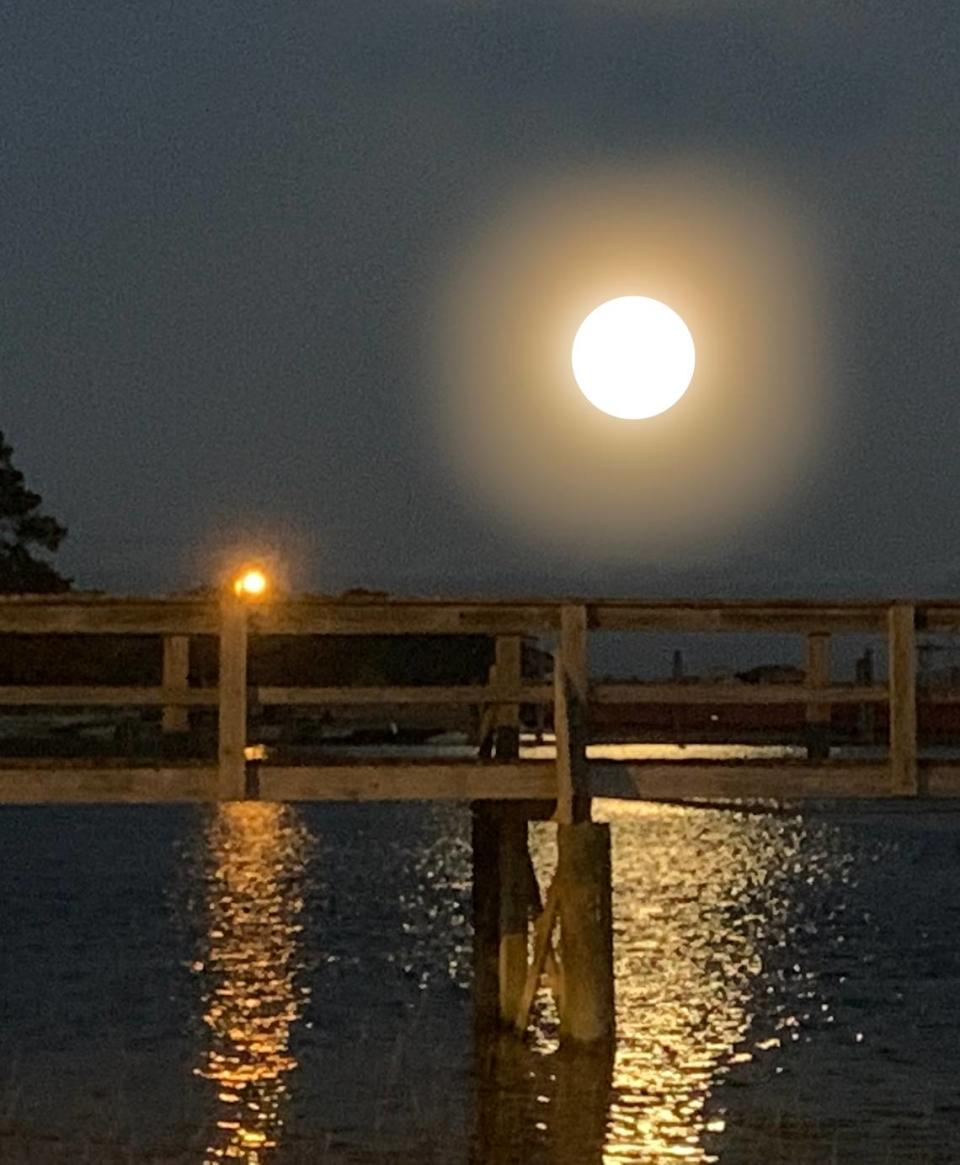A worm moon will soon appear over SC skies. Here’s how March’s full moon got its name
March’s full moon is set to reveal its peak illumination over South Carolina skies in the morning hours on Monday.
Have you ever heard of a worm moon?
If not, chances are you have still seen one.
Called the worm moon, this month’s full moon will occur at 3 a.m. on Monday and will be visible Sunday evening and again Monday night.
This month’s full moon is the last moon phase in January.
Why is it called the worm moon?
Why exactly is March’s full moon named after a worm?
Although it was originally thought that the name worm moon referred to the earthworms that appear in the spring’s warming soil and are a telling sign of the impending springtime, there may be more to the story than initially believed.
“In the 1760s, Captain Jonathan Carver visited the Naudowessie (Dakota) and other Native American tribes and wrote that the name worm moon refers to a different sort of ‘worm’—beetle larvae—which begin to emerge from the thawing bark of trees and other winter hideouts at this time,” according to the Farmers’ Almanac.
Will it impact tides along coastal South Carolina?
Those living in coastal regions of South Carolina can expect to experience spring tides due to this month’s full moon.
With the onset of an upcoming full moon, local tides will be impacted and will act as spring tides.
A spring tide is “a tide just after a new or full moon, when there is the greatest difference between high and low water,” as detailed by the Oxford Dictionary.
Tide height comparisons for January showing their relation to the moon’s phase can be found at Tidetime.org for three coastal South Carolina locations at the following hyperlinks:

The Full Moon schedule for 2024
Here is a list of all the full moons that will take place this year and their peak illumination times in the Eastern Time Zone, according to timeanddate.com.
Jan. 25: This full moon happened at 12:54 p.m. It’s called the wolf moon.
Feb. 24: This full moon happened at 7:30 a.m. It’s called the snow moon.
March 25: This full moon will occur at 3:00 a.m. It’s called the worm moon.
April 23: This full moon will occur at 7:48 p.m. It’s called the pink moon.
May 23: This full moon will occur at 9:53 a.m. It’s called the flower moon.
June 21: This full moon will occur at 9:07 p.m. It’s called the strawberry moon.
July 21: This full moon will occur at 6:17 a.m. It’s called the buck moon.
Aug. 19: This full moon will occur at 2:25 p.m. It’s called the sturgeon moon.
Sept. 17: This moon will occur at 10:34 p.m. It’s called the corn/harvest moon.
Oct. 17: This moon will occur at 7:26 a.m. It’s called the hunter’s moon.
Nov. 15: This full moon will occur at 4:28 p.m. It’s called the beaver moon.
Dec. 15: This full moon will occur at 4:01 a.m. It’s called the cold moon

